Forage is the key
Press-centre / News,
EkoNivaAgro Left Bank Operation, Liski district, Voronezh region, has held a two-day seminar on forage preparation. The main objective of the event was to make the new employees familiar with the standards and technologies of the process at the enterprises of the holding and to encourage experience exchange.
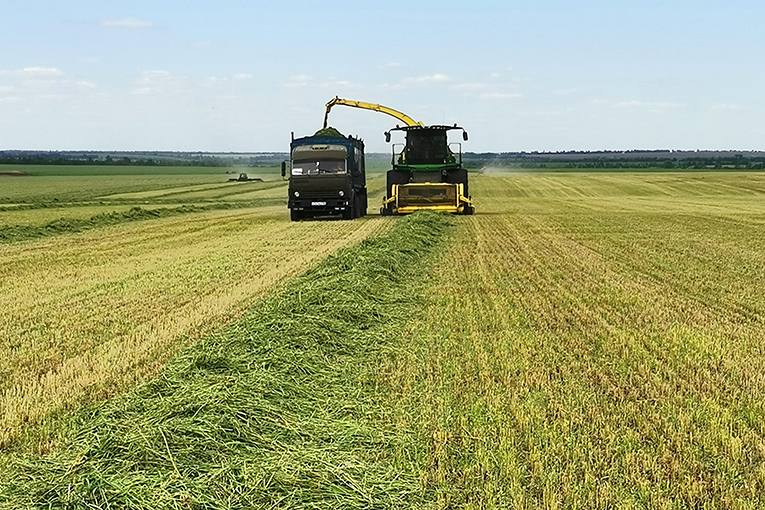
The chief herd managers and herd nutritionists of the farming operations and dairies from different regions of EkoNiva - Siberia, Leningrad, Orenburg, Kaluga, Moscow, Voronezh oblasts as well as Republics of Tatarstan and Bashkortostan took part in the event.
Nutritive value and high quality of forage are two key factors which directly affect milk yields and quality and animal health. Crop farming specialists of the company work in close collaboration with the engineering department to achieve the best combination of these parameters.
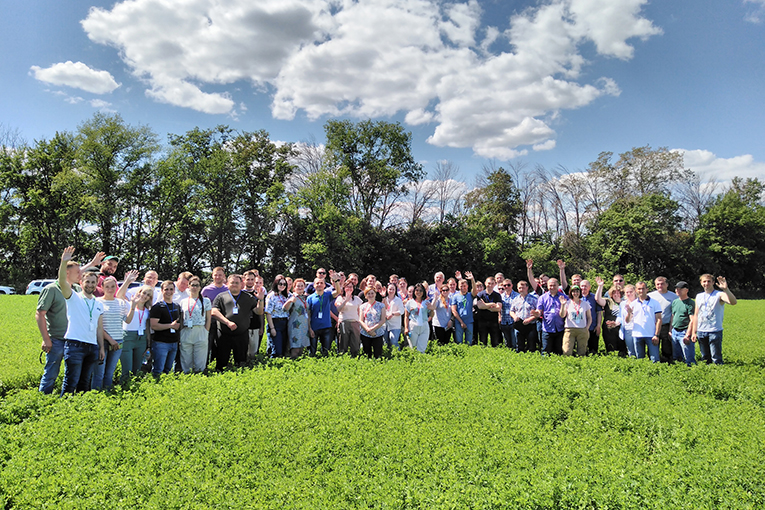
‘The efficiency of the overall production and the end profit are highly correlated to feedstuff’, says Mikhail Gurnov, Livestock Farming Director of EkoNiva-APK Holding. ‘An enormous part of investment goes into forage preparation, and, in fact, our herd managers deal with the largest part of the budget. We need not only to avoid money loss but also to increase milk yields and product quality. For this purpose, we hold in-house seminars on an annual basis, learn the best practices of the holding enterprises and make improvements.’
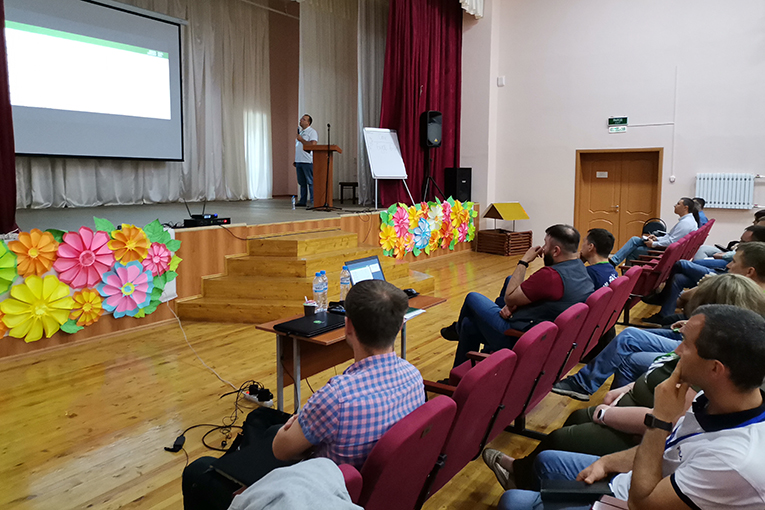
At the event, the attendees studied the process of forage preparation observing alfalfa cutting. Together with Aleksey Nizkodubov, Chief Agronomist of EkoNivaAgro Left Bank Operation, the participants visited the fields where the crop reached the flower-bud formation stage, which is perfect for cutting. Denis Sokhin, Maintenance Department Engineer, explained how to adjust and use modern machinery – the John Deere R450 windrower, the 8400i and the 7680 Series John Deere Harvesters, the Kverneland 8590 tedder and the ROC RT1220 continuous merger.
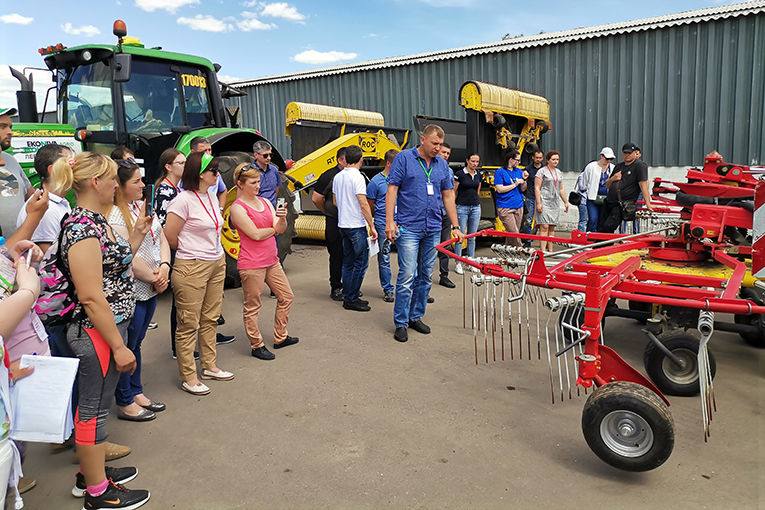
‘It is important to have the best nutritive value in the harvested forage, but it is even more important to preserve it’, says Viktor Kosintsev, Head of Cattle Nutrition Department of EkoNiva-APK Holding. ‘Forage process is not over, until the last pile is eaten by cows. Just imagine – the crop has been harvested in time, but the pile was packed and covered poorly, with cheap holding material. In this situation, fermentation process doesn’t go right, unwanted microorganisms and pests can penetrate the mass. It can result in animal diseases, extra veterinary costs, milk quality deterioration and other losses. To avoid it, we instruct to follow time-proven rules – keep the geometry of the concrete bottom of a pile, ensure the proper tractor weight distribution, thickness of forage layers during compaction, edge flatness, perfect cover and pressing of the material.’
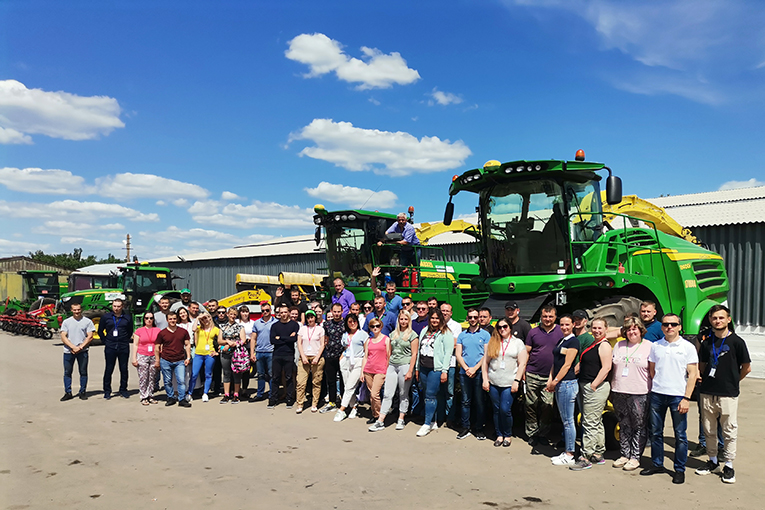
Last year, we managed to prepare 570,000 tonnes of forage in dry matter, 425,000 tonnes of haylage and hay, 145,000 tonnes of silage, over 60,000 tonnes of corn-cob mix and over 12,000 tonnes of cracked grain. The constant growth of our milk yields proves our forage quality. The average daily milk output per a milking cow has increased from 28.7 to 30.9 kg in the past 10 months. And there is more to come due to our continuous training programme!
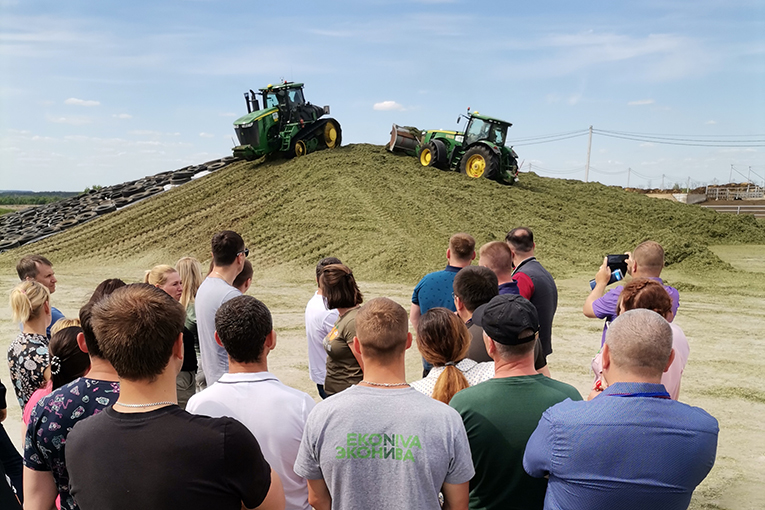
By Aleksandr KUTISHCHEV